By Tommy Clarkson from the July 2014 Edition
Indian Comb, Pachycereus pecten-aboriginum
Family: Pachycereus
Also known as: Aborigine’s Comb, Chik, Etcho, Hairbrush Cactus and Hecho
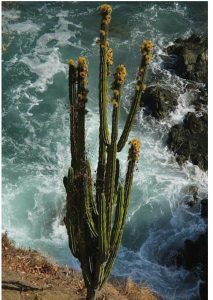
With limited space in Ola Brisa Gardens, we’ve made difficult decisions about what plants to showcase. Early on we decided to have only a few (and those for accent) cacti. Hence, this huge beauty the Indian Comb does not presently grow here. But who knows, one might ultimately find a home in the expansion area across the street!
However, several presently grow about 100 meters from us on our ridge overlooking the Santiago Bay. Beyond those, in a landscaping project I have undertaken for a friend, I enjoy several older beauties on the steep slope below his home. It is from these two locations that the pictures of these more mature specimens come . . .though many nurseries sell small ones.
My friend Dr. Mark Earl Olson Zunica of the University of Mexico and a learned, experienced botanist has kindly shared some of his extensive knowledge about the Indian Comb with me. (Footnote: The subject cactus may or may not be of the sub-species Tehuantepecanus and/or the large “Crested” form mentioned in www.cactuspedia.info. The opinions of several sources seem to differ! For sake of presumption, I will surmise that it is.)
The Encyclopedia of Cacti s tates that it’s “one of the most massive columnar, treelike cacti in the world” attaining heights varying from 23’-50’ (seven to fifteen meters).
Its trunk is short but it sports very large, closely set, five photo credit by Doug Judson to ten foot (one-half to three meters) long arms. With ten to twelve acute ribs, these are five to seven inches (12 – 18 centimeters) in diameter and, on which, grow short spines. This source notes that “This very spectacular species rivals the size and majesty of Carnegia Gigantea (Sahuaro).”
How else might this cactus be identified?
Its five to ten centimeters long flowers are white with a reddish brown exterior and showy with purplish outer petals, white tepals and one-half to four fifths of an inch (13 -20 millimeters) long floral bracts. Each has a floral tube that is covered with dense brown velvety wool.
Its blooming season is different from all other columnar cacti in that it can flower at any time. Its slightly less than three inches (76 mm) in diameter fruit are red and split apart at maturity. Each of them is densely covered with about two inch (5 cm) long, golden yellow spines that are, for all intents and purposes, harmless with pulp which is firm and, just barely, juicy. As these fruits develop they seem to appear in large golden clusters on the plant’s arms providing that attractive look admired by many.
According to the International Union for Conservation of Nature and Natural Resources, the Indian Comb grows in Mexico in Baja California Sur, Chiapas, Chihuahua, Colima, Guerrero, Jalisco, Michoacán, Nayarit, Oaxaca, Sinaloa, Sonora, and Zacatecas. Yep, here on the coast in the State of Colima lo and behold we find them majestically proliferating!
Now, according to the Arizona-Sonora Desert Museum, “This is the most common columnar cactus in (the) lower tropical deciduous forest of southern Sonora. (In that locale its) nocturnal flowers bloom in January to March and are an important food source for migrating lesser long nosed bats (Leptonycteris curasoae).”
Should your zeal to know more drive you to it, there is a somewhat scholarly abstract on the “Geographic differentiation in the pollination system of the columnar cactus Pachycereus pecten aboriginum” which may be found on the American Journal of Botany site. But, I gotta’ admit , my eyes glazed over a bit perusing it as I’m just an old ”root around in the dirt” sort of plant guy!
Perhaps the most interesting nugget I found in that abstract was yet another confirmation that its flowers open only at night, closing early in the morning and inasmuch as the nectar is secreted only during these “dark hours” the flowers are exclusively pollinated by three species of nectar feeding bats.”
Now for the “grocery store, checkout lane” Expose’ type info! The book Plants of the Gods purports that the juice of the young branches of the Pachycereus pecten-aboriginum, are used by the northern Mexico Tarahumara Indians who live in the canyons of the Sierra Madre Occidentals to make the peyote substitute, narcotic hallucinogenic beverage “cawe” or
“Wichowaka”. This, rather appropriately, means insanity.
Rather drought-tolerant, the Indian Comb is, obviously suitable for xeriscaping. If you’ve space and enjoy cacti this would be a great one to have!
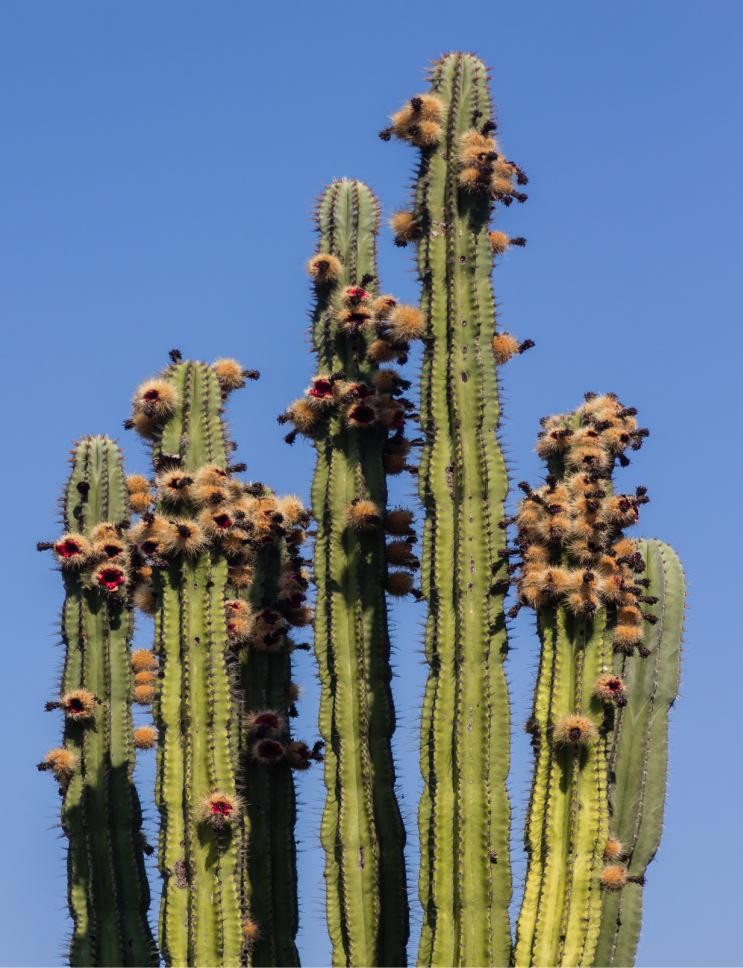
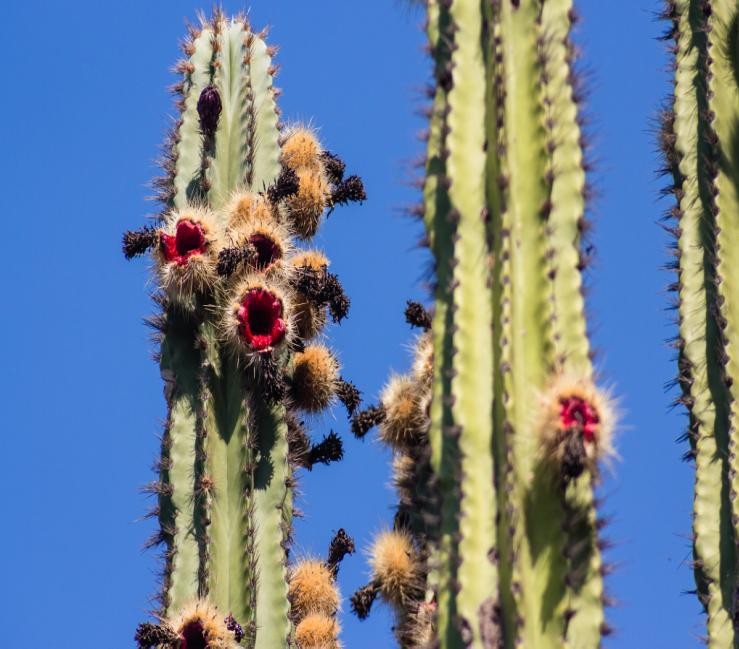
Download the full edition or view it online
—
Tommy Clarkson is a bit of a renaissance man. He’s lived and worked in locales as disparate as the 1.2 square mile island of Kwajalein to war-torn Iraq, from aboard he and Patty’s boat berthed out of Sea Bright, NJ to Thailand, Germany, Hawaii and Viet Nam; He’s taught classes and courses on creative writing and mass communications from the elementary grades to graduate level; He’s spoken to a wide array of meetings, conferences and assemblages on topics as varied as Buddhism, strategic marketing and tropical plants; In the latter category he and Patty’s recently book, “The Civilized Jungle” – written for the lay gardener – has been heralded as “the best tropical plant book in the last ten years”; And, according to Trip Advisor, their spectacular tropical creation – Ola Brisa Gardens – is the “Number One Tour destination in Manzanillo”.
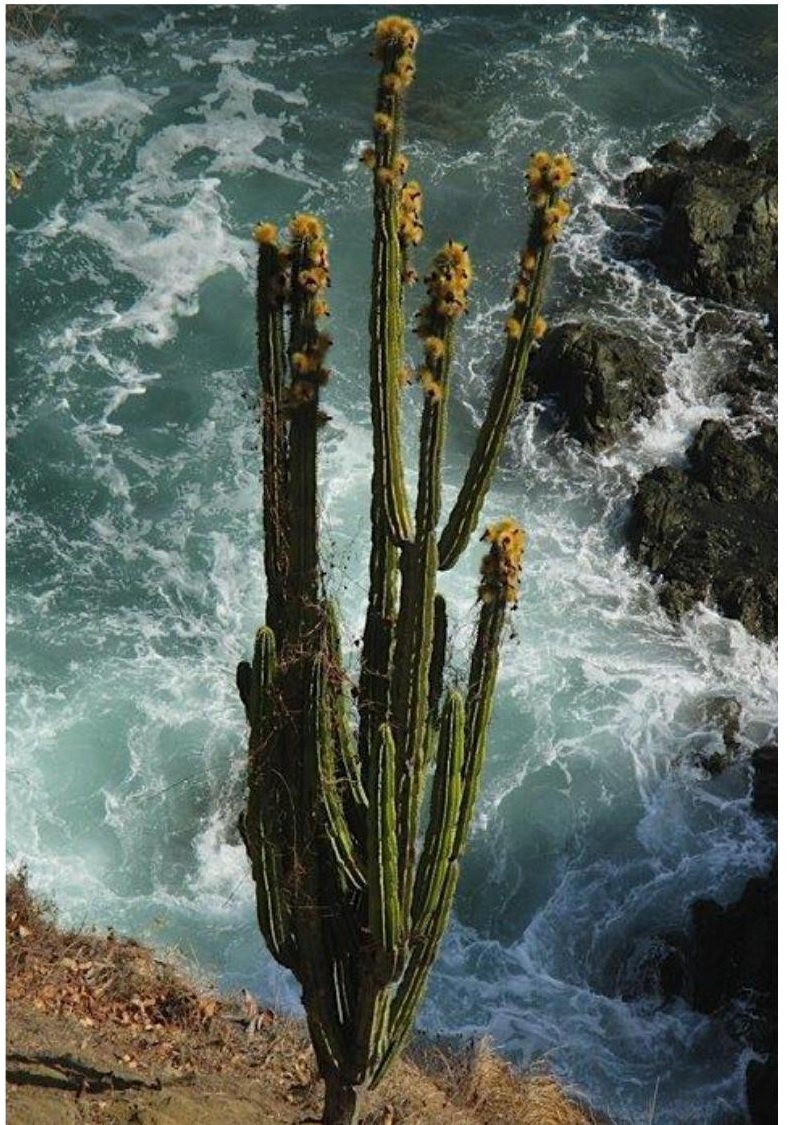


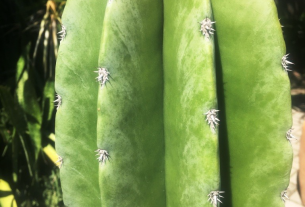

You must be logged in to post a comment.